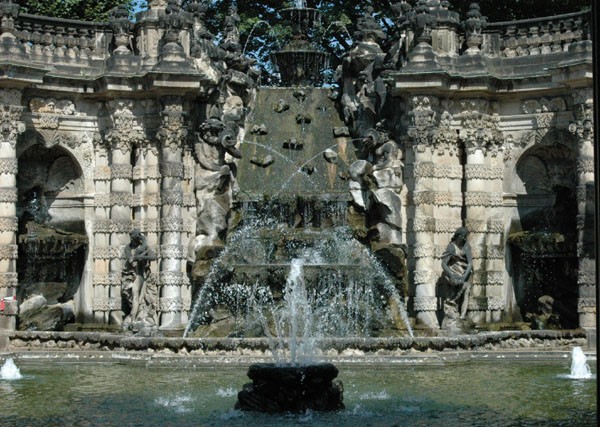 Water as a symbol of life and movement belongs in almost every garden. We make suggestions, how it can be integrated harmoniously into the planning.
Water as a symbol of life and movement belongs in almost every garden. We make suggestions, how it can be integrated harmoniously into the planning.
There is even space for a real pleasure garden on less spacious plots. The examples shown here should prove it, that the choice and design of the details ensure an appealing atmosphere and that water plays a special role in this connection.
Before implementation, it is best to put your ideas in a plan, in a perspective view or in a scale model. You may want to consult a professional garden architect, who pays attention to the harmonious coherence of the projects and ensures it, that individual projects do not confuse relations.
A bird bath should not be missing in any garden. It is best to choose a boulder for this, that a stonemason works on. You should only use the commercially available potions, if this is in shape, Add material and color to your garden. The installation effort is limited to this, to dig a pit, with 15 to 20 cm gravel is filled. Then comes one 5 cm thick layer of paving sand and on top the stone. Selected large pebbles provide the transition to the surrounding plants. Avoid close proximity to dense shrubbery, because cats could lurk there and be fatal to the birds. Far more difficult to handle are troughs, scoop wells and all kinds of solid wells – if only because of the often considerable effort involved, to transport them on the spot. The structural preparation is almost the same for all types of fountains.
Frost is a problem for every pond
When digging the pit, Unter- and topsoil piled up separately for reuse.
Then the pit is filled with sand or gravel up to the level of the pool. After compacting the material must be checked, whether the gravel bed is level. Cement can be spread over the top layer of gravel and raked in at problematic locations. The edge zone is filled with topsoil and planted or covered with stone slabs.
Wall fountains are usually connected to a drinking water pipe, so that they can also be used as drinking fountains. The situation is different with Spring- or. bowl fountain, which have a circulation pump, so that the water flowing over the edge of the well can reach the start of the cycle again from a catch basin. When purchasing and installing a fountain using this technique, you should be aware of this, that the splashing noises – especially as it is mechanically generated and always uniform – get on the nerves of some people over time.
Wells are harmless in this respect, that simulate the bubbling of a spring. Boulders look the most natural, those of the stonemason or – if their consistency allows – pierced with a hammer drill. A piece of garden hose is then simply inserted through the borehole. Greater source- and bubble stones receive a foundation or. a concrete U-brick base.
For fountains- and ponds of larger dimensions are used as water tanks made of concrete, Pre-made plastic tubs or pond liners are used. Water basins with vertical walls are emptied in winter, as the pools would be damaged as a result of the expansion of freezing water.
Bigger pools, which are not emptied in winter, get sloping walls, allowing the ice to expand upwards.
Ponds with fish should at least 80 be cm deep. Straw and fagots can prevent the water from freezing completely.